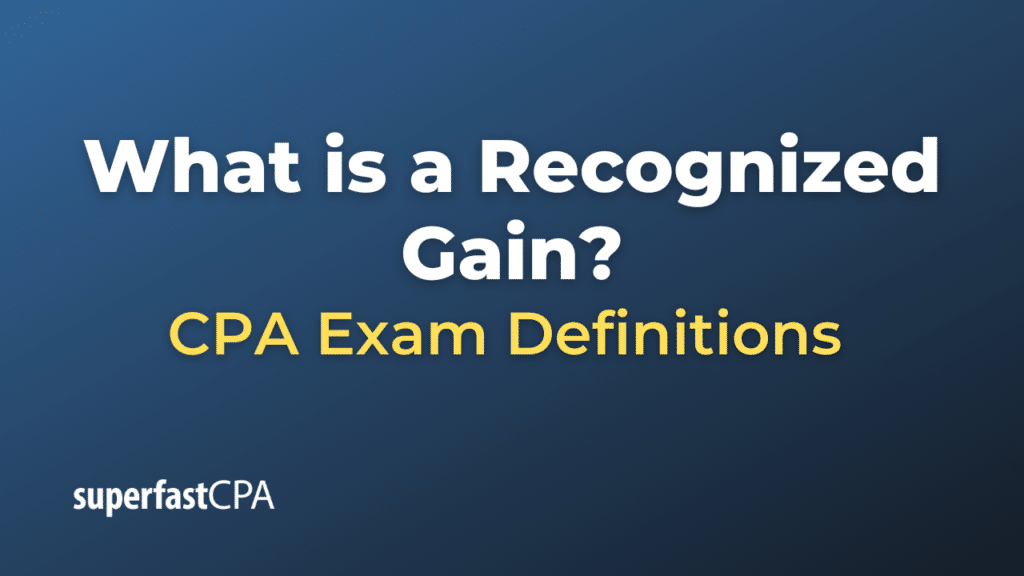Recognized Gain
A recognized gain refers to the amount of profit that results from the sale or exchange of an asset and is reported on the taxpayer’s income statement and, therefore, subject to taxation. Essentially, it is the difference between the selling price of the asset and its adjusted basis (typically, its purchase price adjusted for improvements, depreciation, or other relevant factors). When the gain is “recognized,” it becomes reportable for tax purposes in that year.
It’s important to distinguish between a “realized” gain and a “recognized” gain:
- Realized Gain: This is the difference between the selling price of an asset and its adjusted basis, regardless of whether the gain is reported on the income statement or not.
- Recognized Gain: This is the portion of the realized gain that is reported on the income statement and thus subject to taxation.
In some cases, not all realized gains are recognized immediately due to specific tax provisions that allow for the deferral of gains under certain conditions.
Example of a Recognized Gain
Let’s delve into an example to illustrate the concept of a recognized gain.
Jane bought shares in Company ABC five years ago for $5,000. Today, she decides to sell those shares for $15,000.
Calculating Realized and Recognized Gain:
- Realized Gain:
- Purchase Price of Shares = $5,000
- Selling Price of Shares = $15,000
- Realized Gain = Selling Price – Purchase Price
- Realized Gain = $15,000 – $5,000 = $10,000
Jane has a realized gain of $10,000 from selling her shares.
- Recognized Gain:
Suppose Jane doesn’t reinvest the proceeds in a manner that would defer the gain for tax purposes, and there are no specific tax provisions that would allow her to defer or exclude this gain. The entire realized gain becomes recognized.
Recognized Gain = $10,000
This recognized gain of $10,000 would be reported on Jane’s income tax return for the year, and she would likely owe taxes on it. The specific amount of taxes would depend on her overall tax situation, the tax rate applicable to capital gains, and the duration she held the asset (short-term vs. long-term capital gains).
In this scenario, the realized gain and the recognized gain are the same because there aren’t any specific tax strategies or provisions applied that would defer or exclude the gain from being recognized.
However, if, for example, Jane had sold a real estate property and used the proceeds to purchase another similar property (a like-kind exchange under U.S. tax laws), she might have been able to defer recognizing the gain, even if she had realized it. In such cases, the recognized gain could be less than the realized gain due to the application of specific tax rules.













